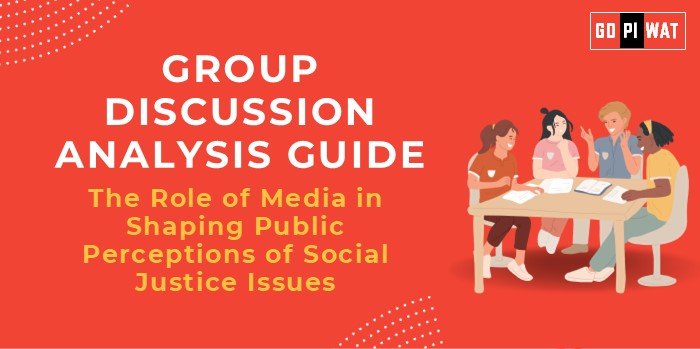📋 The Role of Media in Shaping Public Perceptions of Social Justice Issues
🌐 Introduction to The Role of Media in Social Justice
Opening Context: “In an era of global interconnectivity, media has emerged as a powerful instrument, influencing public opinions, driving social movements, and shaping narratives around social justice issues such as inequality, climate change, and human rights.”
Topic Background: Media’s role has evolved with the advent of digital platforms, transitioning from traditional outlets to include social media influencers and citizen journalism. Landmark movements like the Civil Rights Movement demonstrate media’s historical impact, while today’s platforms enable real-time activism, amplifying voices instantaneously.
📊 Quick Facts and Key Statistics
- 🌍 Global Media Consumption: Over 4.9 billion people access the internet as of 2024, highlighting media’s unparalleled reach (Source: ITU).
- 📢 Social Media for Activism: 71% of global internet users believe platforms like Twitter and Facebook amplify marginalized voices (Source: Pew Research).
- 🌐 Digital Divide: 34% of rural populations in developing countries lack consistent internet access, limiting equitable participation (Source: World Bank).
- 📈 Hashtag Activism Impact: Campaigns like #BlackLivesMatter and #MeToo reached millions within days, driving legislative and societal change.
👥 Stakeholders and Their Roles
- 🏛️ Government Bodies: Regulate media to ensure ethical dissemination of content.
- 📰 Journalists and Media Houses: Provide investigative reporting, shaping public discourse.
- 📢 Civil Society Organizations: Collaborate with media to amplify advocacy campaigns.
- 💼 Corporations: Influence media narratives through sponsorships and advertising.
- 👪 Citizens: Participate actively through citizen journalism and social media activism.
📚 Achievements and Challenges
Achievements:
- 📢 Amplification of Movements: Campaigns like #MeToo and #BlackLivesMatter have driven policy reforms and societal change.
- 📚 Increased Awareness: Global reporting on issues like climate change highlights shared challenges.
- 🎤 Democratization of Voices: Citizen journalism enables marginalized groups to share their perspectives.
- 💻 Technology Integration: AI tools analyze trends and improve content dissemination accuracy.
Challenges:
- ⚠️ Misinformation: Fake news undermines credible reporting and fosters polarization.
- 📰 Media Bias: Commercial and political affiliations often skew narratives.
- 🌐 Digital Divide: Unequal access limits the participation of underprivileged groups.
Global Comparisons:
- 🇳🇴 Success in Scandinavia: High media transparency leads to more balanced reporting.
- 🌍 Challenges in Developing Nations: Propaganda and censorship hinder objective journalism.
Case Studies:
- 🇮🇳 India: Media’s role in highlighting Dalit rights and gender-based violence.
- 🇺🇸 US: Extensive media coverage of the BlackLivesMatter movement.
🗨️ Structured Arguments for Discussion
- ✅ Supporting Stance: “Media is instrumental in educating and mobilizing the masses on critical issues.”
- ❌ Opposing Stance: “Commercial interests and bias compromise the media’s ability to report objectively.”
- ⚖️ Balanced Perspective: “While media can drive awareness and change, ethical lapses and accessibility issues pose significant challenges.”
🌟 Effective Discussion Approaches
- 💡 Opening Techniques:
- 📊 Data-Driven: “With 71% of internet users recognizing social media’s impact, the question lies in media’s credibility in fostering justice.”
- 📚 Case Study: “The global resonance of the #MeToo movement exemplifies media’s power in driving societal change.”
- 💬 Counter-Argument Handling:
- Highlighting measures like fact-checking platforms to combat misinformation.
📈 Strategic Analysis of Strengths and Weaknesses
- ✅ Strengths: Global reach, instant communication, democratization of content.
- ⚠️ Weaknesses: Propaganda risk, digital literacy gaps.
- 🌟 Opportunities: AI-driven analysis, collaboration with civil society.
- ⚡ Threats: Censorship, rising misinformation.
🎓 Connecting with B-School Applications
- 🌍 Real-World Applications: Media strategy formulation for social enterprises, ethical analysis in corporate communication.
- 💬 Sample Interview Questions:
- “How can businesses leverage media responsibly for social advocacy?”
- “What role does media play in driving corporate social responsibility?”
- 📘 Insights for Students: Media’s influence offers a foundation for strategic marketing, advocacy projects, and CSR alignment.


